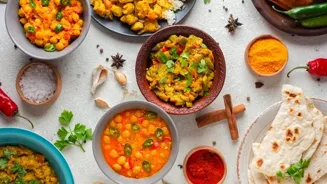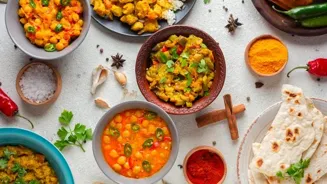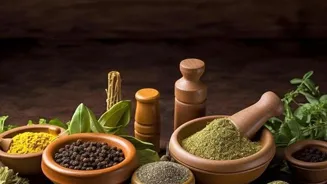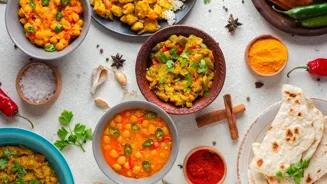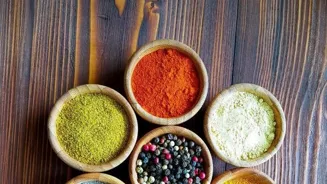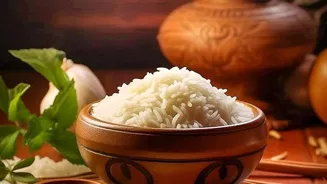Uncover the Essence of Indian Spices: Must-Haves for Your Kitchen! Delve into the vibrant world of Indian flavors
Indian cuisine, a symphony of flavours, owes its richness and depth to its extensive use
of spices. These aromatic wonders not only elevate the taste of dishes but also offer a range of health benefits.
For anyone looking to explore the vibrant world of Indian cooking, having a well-stocked spice rack is essential. Here are seven fundamental Indian spices that every home cook should keep on hand:
Turmeric (Haldi)
This golden spice, derived from the turmeric plant, is a cornerstone of Indian cooking. It adds a warm, earthy flavour and a vibrant yellow hue to dishes. Turmeric is widely known for its anti-inflammatory and antioxidant properties, thanks to the presence of curcumin.
From lentil soups (dal) to vegetable curries (sabzis), turmeric is a versatile spice that enhances both flavour and health. Its mild flavour blends seamlessly with other spices, creating a balanced and harmonious taste profile.
Adding a pinch of turmeric to warm milk is a popular home remedy for colds and coughs.
Cumin (Jeera)
Cumin seeds, with their distinctive earthy and slightly bitter flavour, are another essential ingredient in Indian cooking. They are used both whole and ground, each offering a unique dimension to dishes.
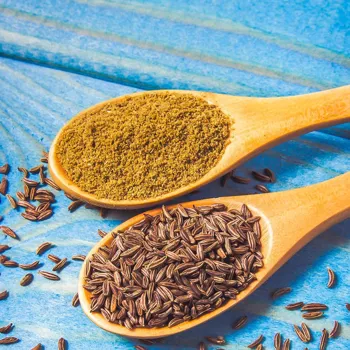
Whole cumin seeds are often tempered in oil at the beginning of cooking, releasing their aromatic oils and imparting a nutty flavour. Ground cumin is added later in the cooking process, lending a warmness and depth to curries, stews, and rice dishes.
Cumin is also known for its digestive properties, aiding in the breakdown of food and reducing bloating. A sprinkle of roasted cumin powder on yogurt (raita) or salads adds a refreshing and flavourful touch.
Coriander (Dhania)
Coriander, available as both seeds and leaves, offers a bright and citrusy flavour that balances the richness of other spices. Coriander seeds have a warm, slightly sweet flavour and are often roasted and ground before use.
They are a key ingredient in spice blends like garam masala and are used to flavour curries, sauces, and pickles. Fresh coriander leaves, also known as cilantro, are used as a garnish, adding a refreshing burst of flavour and a vibrant green colour to dishes.
Coriander is also believed to have cooling properties, making it a popular ingredient in summer drinks and salads. The aroma of fresh coriander leaves is instantly recognizable and adds a touch of freshness to any dish.
Chili Powder (Mirch)
Chili powder, made from ground dried chilies, adds heat and intensity to Indian dishes. The level of spiciness can vary depending on the type of chilies used. Kashmiri chili powder, for example, offers a vibrant red colour and a mild heat, while other varieties can be significantly spicier.
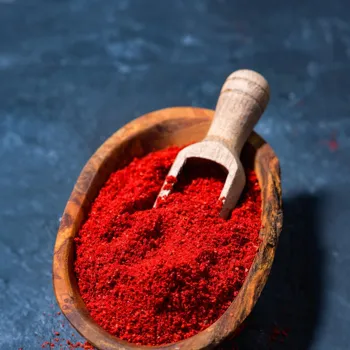
Chili powder is a versatile spice that can be used in curries, marinades, and spice rubs. It adds depth and complexity to dishes, enhancing their overall flavour profile. A pinch of chili powder can also be used to add a subtle kick to snacks and appetizers.
It is important to use chili powder judiciously, as too much can overpower other flavours.
Ginger (Adrak)
Ginger, with its pungent and slightly spicy flavour, is a staple ingredient in Indian cooking. It is used both fresh and dried, each offering a unique flavour profile. Fresh ginger is grated or minced and added to curries, stir-fries, and marinades. It adds a warm and invigorating flavour to dishes.
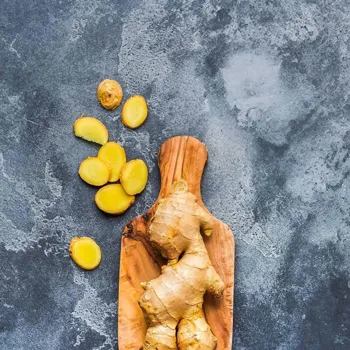
Dried ginger powder, also known as sonth, has a more concentrated flavour and is often used in spice blends and baking. Ginger is also known for its medicinal properties, particularly its ability to soothe nausea and aid digestion. A cup of ginger tea is a popular home remedy for colds and flu.
Garam Masala
Garam masala, meaning "warm spice mixture," is a blend of ground spices that adds a complex and aromatic flavour to Indian dishes. The exact composition of garam masala can vary depending on regional preferences and individual recipes.
Common ingredients include cardamom, cinnamon, cloves, cumin, coriander, and black pepper. Garam masala is typically added towards the end of cooking, as its delicate aromas can be lost if cooked for too long.
It adds a finishing touch to curries, stews, and vegetable dishes, enhancing their overall flavour profile. A pinch of garam masala can also be sprinkled on snacks and appetizers for an extra burst of flavour.
Mustard Seeds (Rai)
These tiny seeds pack a pungent and nutty flavour. Black mustard seeds are most commonly used in Indian cooking. They are often tempered in hot oil until they pop, releasing their aromatic oils and adding a distinctive flavour to dishes.
Mustard seeds are used in a variety of dishes, including pickles, curries, and vegetable preparations. They are also a key ingredient in South Indian cuisine, where they are used to flavour dosas, idlis, and sambar.
Mustard seeds are also believed to have health benefits, including aiding digestion and reducing inflammation. The unique flavour of mustard seeds adds a characteristic touch to many Indian dishes.
Essential spices for Indian cuisine exploration
Having these seven spices readily available will empower you to embark on a culinary journey through the diverse and flavourful world of Indian cuisine. Experiment with different combinations and quantities to discover your own unique preferences and create dishes that tantalize your taste buds.
Happy cooking!
AI Generated Content. Glance/InMobi shall have no liability for the content
